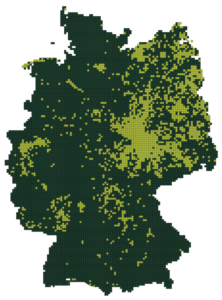Lycium barbarum
Chinese Wolfberry
Lycium barbarum, also known as Chinese wolfberry or goji berry, is a perennial shrub that originates from East Asia and can grow up to 3 metres high. The plant is characterised by its grey-green, narrow leaves, which are arranged singly or in groups on the branches. It flowers from June to September with purple or light blue flowers. The resulting fruits are bright red berries that are consumed in numerous cultures for their supposed health benefits. This plant has been found to be invasive in many parts of the world, including parts of Europe and North America, where it occurs in diverse ecosystems such as riverbanks, grasslands and wastelands. It has the ability to form dense stands that can suppress other plant species. Lycium barbarum's resistance to different environmental conditions contributes to its invasive potential.
Types of damage
Region of origin
China, South East Asia

Introduction vectors
Current distribution
Based on the FlorKart Database of the Federal Agency for Nature Conservation, as of 2013
Miscellaneous
Dispersion forecast
Indicates the proportion of land suitable for habitat under current and future climate conditions (2060-2080) under three emission scenarios (RCP26, RCP45 & RCP85).

Habitat suitability under current climate conditions
These habitat suitability maps show for Lycium barbarum where suitable habitat conditions exist.
The map on the left shows this for current climate conditions. Below this are maps for the time classes 2040-2060 and 2061-2080, in which three different emission scenarios can be selected.
The slider at the top left allows you to adjust the opacity of the map to make orientation easier.
By clicking on the respective quadrant, information on the environmental conditions present in it can be called up.
The methodology is explained here .















